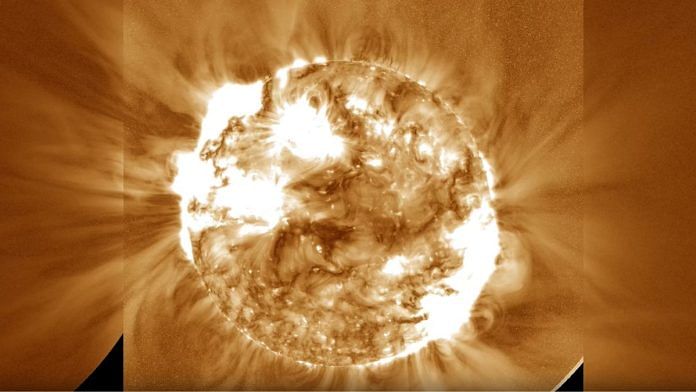Bengaluru: At the dawn of the week, scientists announced that they had observed a large coronal mass ejection, or ejection of material from the surface of the sun, towards Earth. This material interacted with the Earth’s atmosphere, causing a ‘severe’ geomagnetic storm. The event was not significant enough for the public to be affected, but powerful geomagnetic storms in space can damage our satellites, the International Space Station (ISS) and, on earth, affect the electrical grid. This one resulted in a beautiful aurora observed in higher latitudes. Read the National Oceanic and Atmospheric Administration’s (NOAA) report.
Also Read: Ancient mangrove forest discovered on Panama island, preserved by a volcano for 22 million years
Asteroid from a planet
Geologists from NASA presented the first findings from the analysis of soil samples from the asteroid Bennu, and the preprint paper released this week shows a number of findings about the origin of the oddly-shaped space rock. Analysis of the particles from the surface of the asteroid, which came back last year to Earth, shows that Bennu had likely been a part of a wet, tectonically active planet, which orbited one or multiple stars before our sun was even born. It also contains organic molecules required for life, as most asteroids do. The findings provide more credence to the theory that asteroids might have bombarded earth with organic molecules and water, leading to life. Read more.
Words trigger memories in dog brains
Scientists studying dogs observed the brain activity of humans’ best friends when they were asked to respond to commands. While we already know that dogs can recognise words and objects, the study managed to track brain activity for what happens when dogs are told object names.
Scans revealed that dogs had more difficulty retrieving a correct item, as compared to commands to action like walk or sit, since dogs visually picture these items in their heads. They likely also replay a memory associated with objects. Read more.
Human brains are getting larger
Another study, this time on human brains, through a 75-year history, has shown that human brains have been getting larger and larger over the past century. People born in the 1970s had a 6.6 percent larger brain volume and 15 percent larger brain surface area than people born in the 1930s. The study was conducted over 20 years, and the findings might actually mean some good news. Larger brains could indicate improved brain health and physical development, able to delay neurodegenerative diseases like dementia and Alzheimer’s. The study was conducted by UC Davis. Read more
Also read: Planet outside Solar System, twice the size of Earth, may have ‘waterworld with a boiling ocean’



